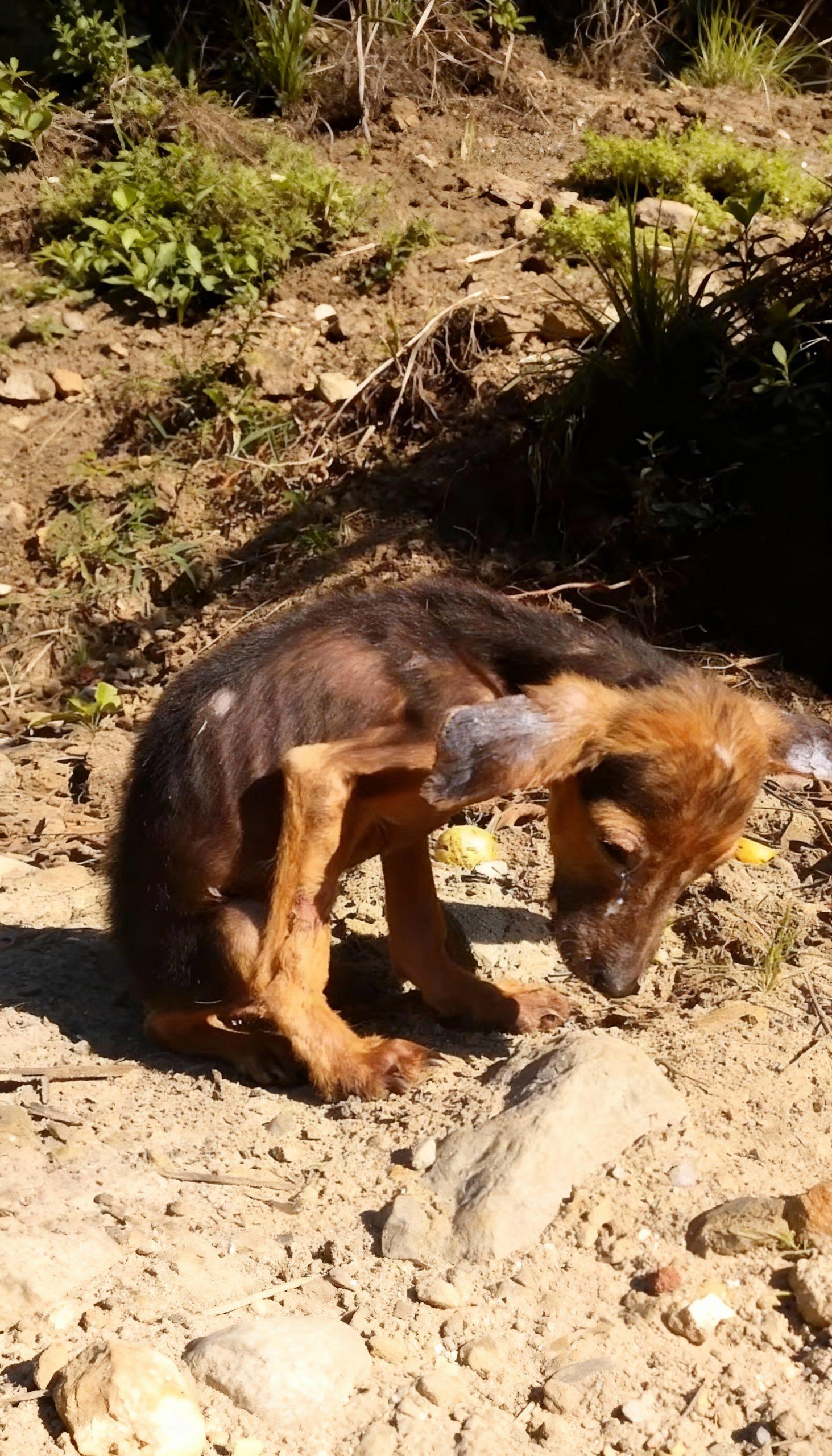The plight of neglected animals is a silent epidemic, often hidden from plain sight, yet its impact reverberates deeply within our communities. The image before us — a young, emaciated dog, its fur patchy and dull, its posture conveying a profound sense of vulnerability — serves as a stark reminder of the suffering many animals endure. This isn’t just a photograph; it’s a testament to a life struggling against adversity, a desperate plea for compassion and intervention. The dog’s skeletal frame, visible beneath its thin coat, speaks volumes about prolonged hunger and inadequate care. Its gaze, directed downwards, suggests a spirit dampened by hardship, perhaps even resignation. Yet, even in this state, there’s an undeniable spark of life, a fragile hope that with the right help, recovery is possible. This image compels us to look beyond the immediate visual and delve into the systemic issues that lead to such heartbreaking situations. It challenges us to confront our responsibilities towards the voiceless and to understand that every neglected animal represents a failure of human empathy and a breakdown in community care. Our goal in this article is not just to highlight the problem but to illuminate pathways to solutions, fostering a collective resolve to transform despair into dignity for these deserving creatures.

The animal in the photograph exhibits clear signs of severe neglect, including malnourishment, fur loss, and possibly skin conditions. These physical manifestations are often just the tip of the iceberg, indicative of deeper emotional and psychological trauma. An animal subjected to such conditions likely suffers from chronic stress, fear, and a profound lack of trust. Their early experiences shape their perception of the world, making them wary of human interaction, even when offered kindness. The journey to recovery for such an animal is multifaceted, requiring not only veterinary care for their physical ailments but also patient, consistent behavioral rehabilitation. This process involves establishing a safe and predictable environment, offering nutritious food, providing medical treatment for any underlying health issues, and slowly reintroducing positive human interaction. The goal is to rebuild their physical health and, crucially, to mend their broken spirit, helping them to understand that not all humans pose a threat. This delicate balance of medical attention and emotional support is paramount for their long-term well-being and their ability to eventually thrive in a loving home.

Beyond individual cases, understanding the root causes of animal neglect is crucial for developing effective prevention strategies. Neglect can stem from a variety of factors, including economic hardship where owners struggle to afford proper food and veterinary care, lack of education regarding responsible pet ownership, mental health issues that impair an owner’s ability to care for themselves or their pets, and sometimes, outright cruelty or indifference. Overpopulation of companion animals also plays a significant role, leading to an abundance of homeless and unwanted pets susceptible to neglect. Addressing these underlying issues requires a multi-pronged approach that includes accessible and affordable veterinary services, community outreach programs to educate pet owners, support systems for individuals facing personal challenges, and robust animal welfare laws that are consistently enforced. Furthermore, promoting spaying and neutering initiatives is vital to control pet populations and reduce the number of animals at risk of neglect.

Many animal welfare organizations and shelters work tirelessly on the front lines, rescuing, rehabilitating, and rehoming neglected animals. These organizations rely heavily on community support, including donations, volunteers, and foster homes, to carry out their vital missions. Volunteers contribute in numerous ways, from cleaning kennels and walking dogs to assisting with adoption events and administrative tasks. Foster homes provide a temporary, loving environment for animals, allowing them to decompress from the stress of shelter life and receive individualized attention while awaiting their forever families. Financial donations are crucial for covering the costs of medical treatment, food, shelter, and operational expenses. Supporting these organizations, whether through direct involvement or monetary contributions, directly translates into saving lives and giving neglected animals a second chance at happiness. The impact of a single volunteer or donor can be profound, transforming an animal’s life from one of despair to one filled with hope and love.







